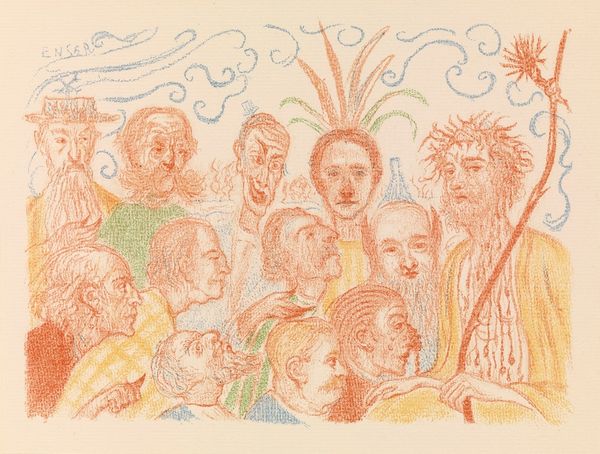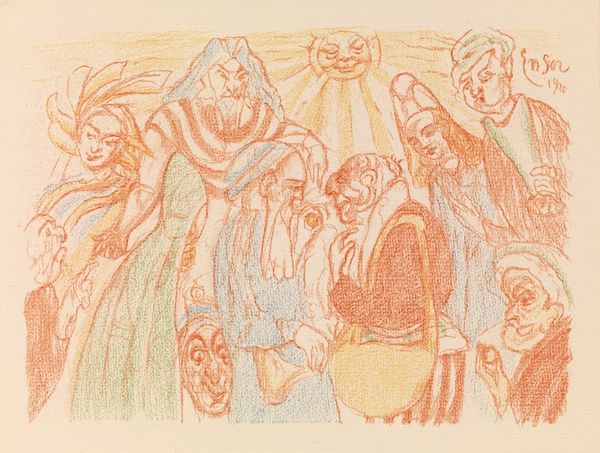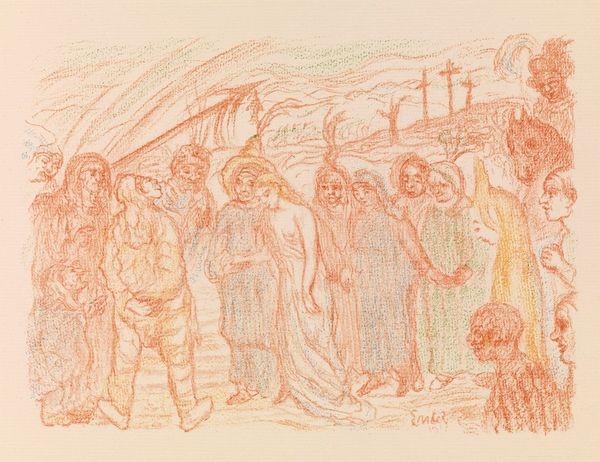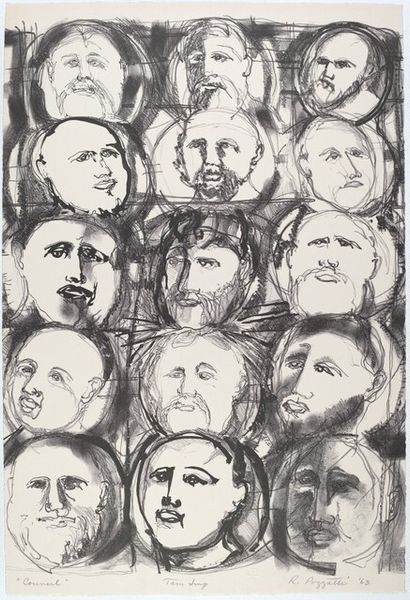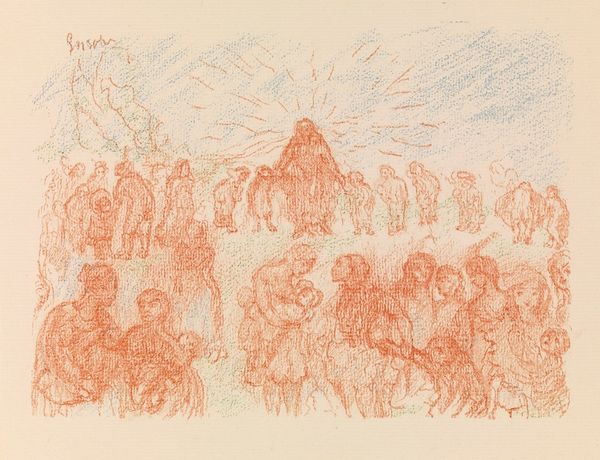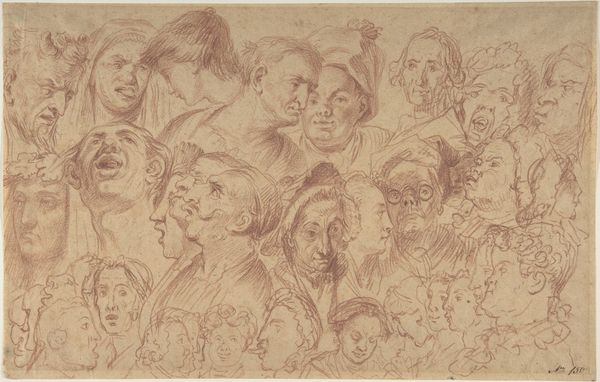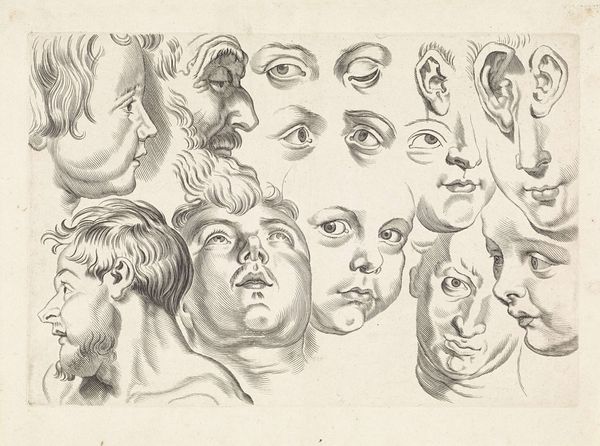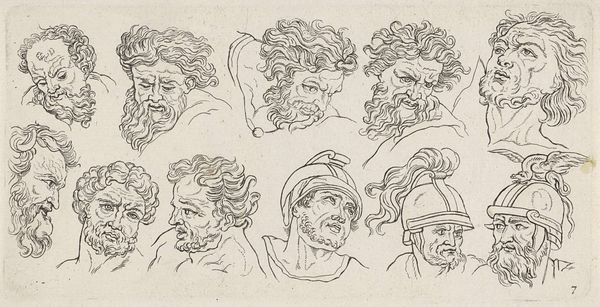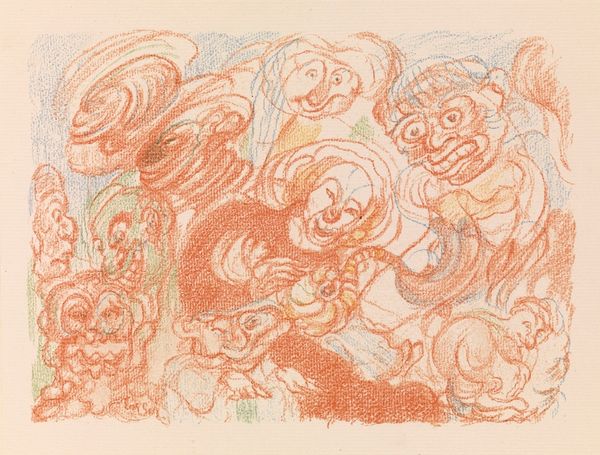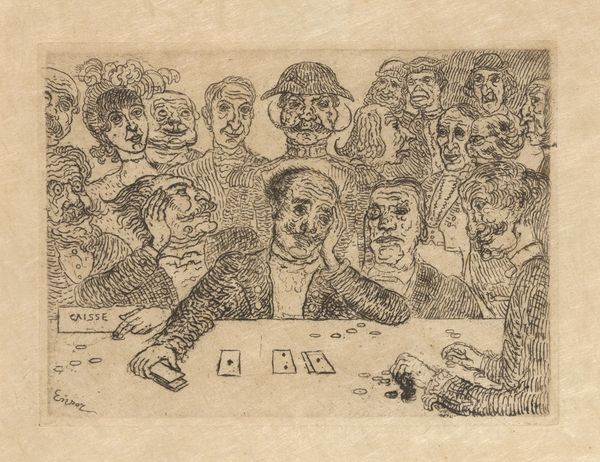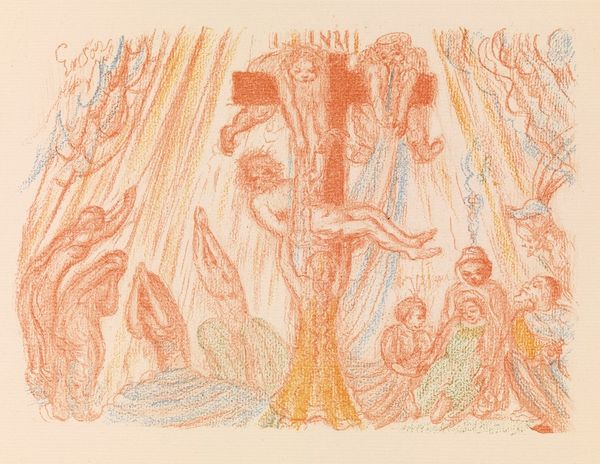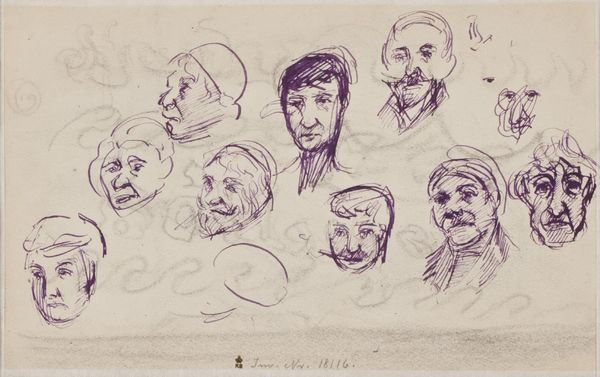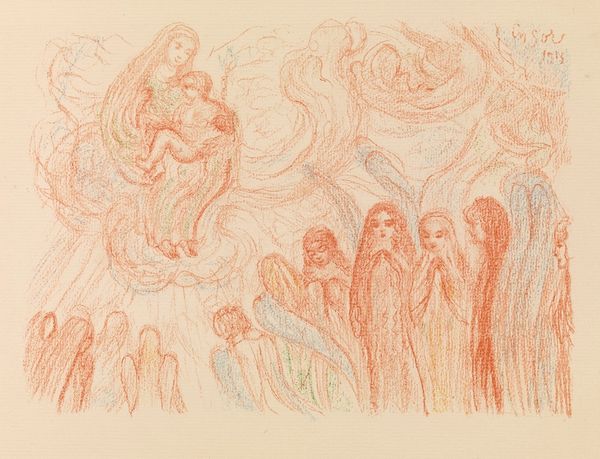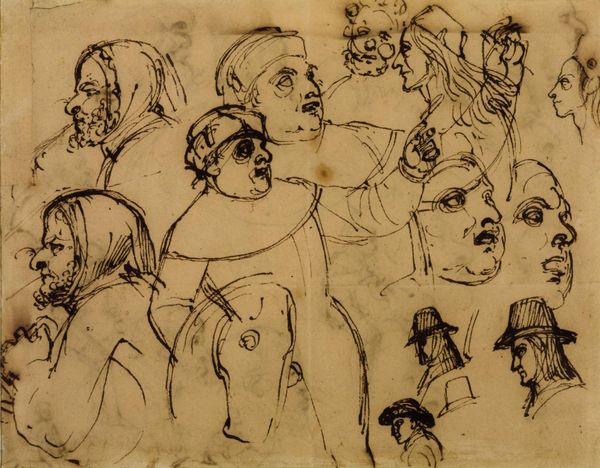
Copyright: Public Domain: Artvee
Curator: This drawing is titled "The Holy Ghost Enlightens the Apostles" by James Ensor, created in 1921 using ink. It’s a striking piece. What’s your immediate reaction to it? Editor: I’m struck by the texture. The density of the ink strokes gives the image a raw, almost feverish quality. You can practically feel the paper. Curator: Indeed. Ensor’s use of ink exemplifies the Expressionist interest in raw emotion made visible through process. Look at the way he's applied it – frantic lines building up these intense, almost grotesque faces. And given the date, it sits squarely in a post-war milieu hungry for spiritual solace but also deeply marked by trauma. Editor: I think the placement of the ghostly figure at the top suggests more than solace. There’s something unsettling about the arrangement. Their upturned eyes meet in unison, it almost mocks the historical depiction. Did the consumption of mass art contribute to Ensor's interpretation? Curator: It’s definitely a pertinent inquiry, the figures become more cartoonish as Ensor moved away from painting, and shifted toward accessible pen-and-ink drawing. The piece might be seen as critical to institutional faith as well. Editor: True, and considering the art market and its developing institutions after the First World War, such accessible imagery made religious themes open for broader interpretation. And his means of production really leans into mass consumption through its simplistic materials. It's clearly ink on paper. Curator: Absolutely. Ensor knew exactly what he was doing when he chose such humble materials for such a weighty subject, disrupting notions of high art versus low art by imbuing a traditional theme with modern unease. The role of artistic labor, in making sacred images more open to a popular interpretation is also vital. Editor: Yes, the act of reproduction, how imagery reaches different audiences is essential. The materiality speaks volumes – this isn't some grand oil painting meant for a church; it's something more intimate, questioning religious spectacle for a skeptical public. Curator: Exactly, which makes the viewing experience that much more nuanced when encountering the art! It almost acts as an early meme, questioning while allowing each person their own interpretation. Editor: Right, looking at the impact of accessible spiritual figures in post-war society really allows us to examine faith and institutionalized practice today!
Comments
No comments
Be the first to comment and join the conversation on the ultimate creative platform.
